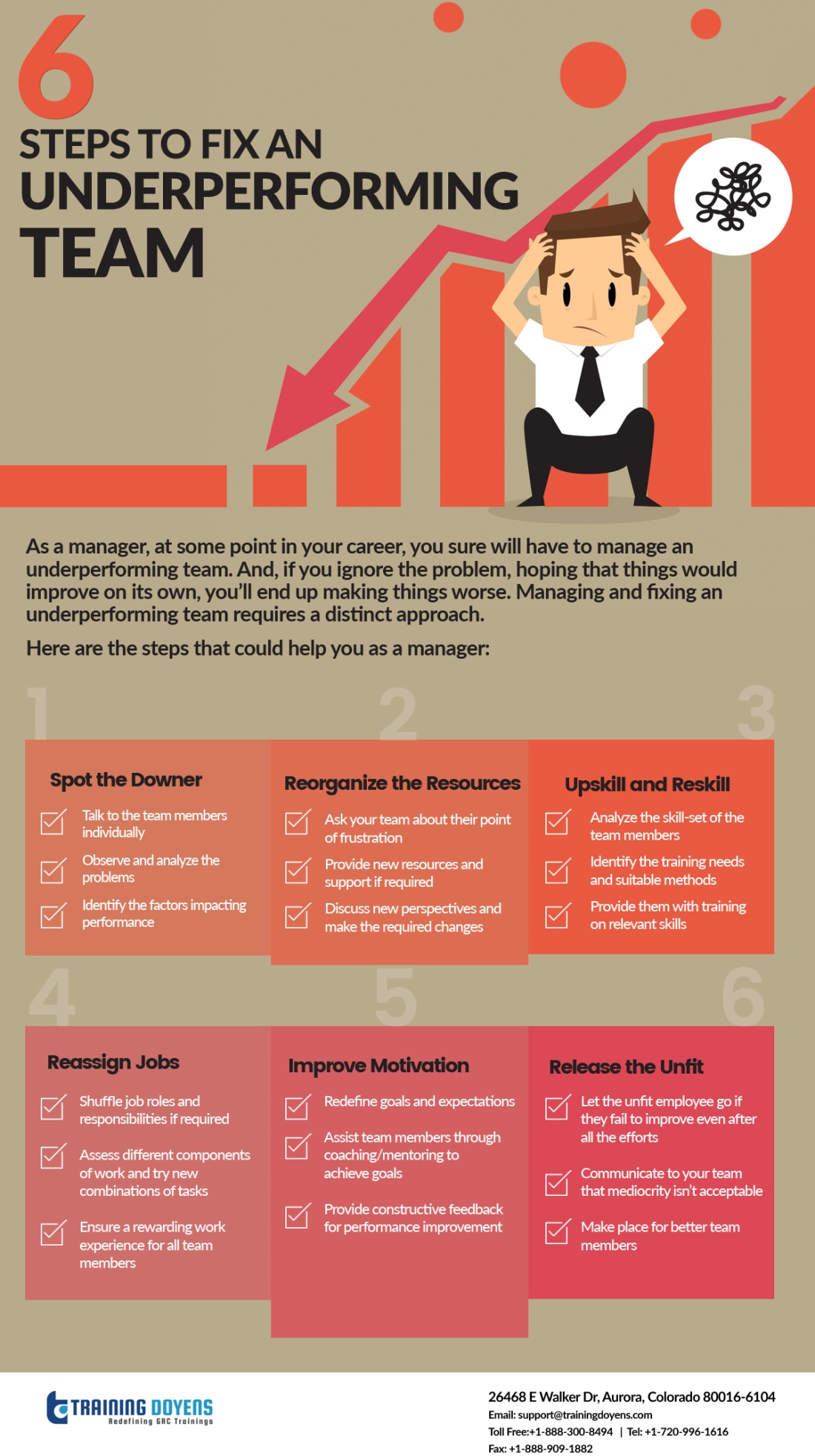 As a manager, you need to deal with a myriad challenges and one of the most difficult among them could be managing and fixing an underperforming team. Underperformance has many aspects like not achieving targets, low productivity, poor standard of work and the list goes on and it adversely impacts the organization in multiple ways. In fact, one underperforming team can damage the business as well as the morale and efficiency of other teams too. Inheriting an underperforming team could be a nightmare for leaders but if you succeed in turning it around you would certainly add a star skill to your resume. And for this, you need to analyze the problem first and then design an approach to turn those under-performers into star performers of the organization. Here are some strategies that could help you do that:
As a manager, you need to deal with a myriad challenges and one of the most difficult among them could be managing and fixing an underperforming team. Underperformance has many aspects like not achieving targets, low productivity, poor standard of work and the list goes on and it adversely impacts the organization in multiple ways. In fact, one underperforming team can damage the business as well as the morale and efficiency of other teams too. Inheriting an underperforming team could be a nightmare for leaders but if you succeed in turning it around you would certainly add a star skill to your resume. And for this, you need to analyze the problem first and then design an approach to turn those under-performers into star performers of the organization. Here are some strategies that could help you do that:
- Identify the Factors
Before reaching a conclusion and taking any action, observe and talk to your team. Assess the problems and identify the factors causing them. Sometimes, there are obvious reasons residing in plain sight which once addressed can boost the team performance quickly. Be patient and observant to understand the factors causing underperformance.
- Understand the Team Dynamics
Understanding the behavior and skillset of each person can be helpful in understanding team dynamics. Assessing the strengths and weaknesses of every member of the team can give you answers to why the team is underperforming. This can also help you devise an effective strategy to fix things.
- Clarify the Goals
Sometimes the team loses sight of the goal. When things deteriorate the managers need to remind the team about the goal they need to accomplish together. Team members rely on managers for guidance and feedback and clarifying the goals is the first step in steering them in the right direction.
- Promote Trust
Trust is one of the most important ingredients of a successful team. But the problem is that it cannot be forced. Trust takes time to develop. However, as a manager, you must promote the trust-building process by taking proactive steps. Show up for the meetings, participate in conversations, support them, be interested and show the team that you are making efforts along with them to reach goals.
- Define the Required Team Characteristics
A team isn’t just a group of people working together. Their activities are interconnected and each member of the team is dependent on others to complete the work successfully. A manager needs to envision things to determine what kind of team is required to achieve goals. Define and emphasize the characteristics important for success.
- Link Activities to Goals
Many employees perform their daily activities sincerely without even knowing how their work is contributing to the big picture. Help your team understand the link between their activities and the organizational goals. Explain the impact of their work on customers, stakeholders, and peers. This might help them streamline their work to align it with organizational goals.
- Offer Feedback and Recognition
Detailed, timely and constructive feedback is very important for guiding them in the right direction. Recognizing and rewarding positive behaviors and relevant work help employees know what is the right thing to do. This also encourages the performers to do better and the non-performers to improve.
- Train Your Team
Introducing something new or a change in the process or strategy may hinder the workflow as adapting to change isn’t always easy for everyone. Also, sometimes the team members lack the required skills and knowledge to perform. What they need in such scenarios is proper training. As a manager, you must ensure that they are adequately trained and have the right support to explore new working styles.
- Be Patient
Turning around an underperforming team is not an overnight job. It requires a lot of effort, consistency and time. You may not see the results immediately or you may have to flex the strategies a little but the trick is to remain consistent and patient. Give your team ample support, opportunities and time to change.
- Make Tough Decisions If Required
Even after you put in all the right efforts and stay patient, some employees will not deliver. If an employee doesn’t at all look fit for the team, prepare yourself to make tough decisions like terminating them or moving them to a different project. This might also impact other team members, so it’s important to communicate the decision and the intent behind it clearly so that they know it’s for the good of the team.
Even the best leaders or managers find it difficult to turn around an underperforming team. Although the task is challenging, some carefully devised strategies and the right temperament can help you achieve this, no matter the number of issues lurking in the team.
